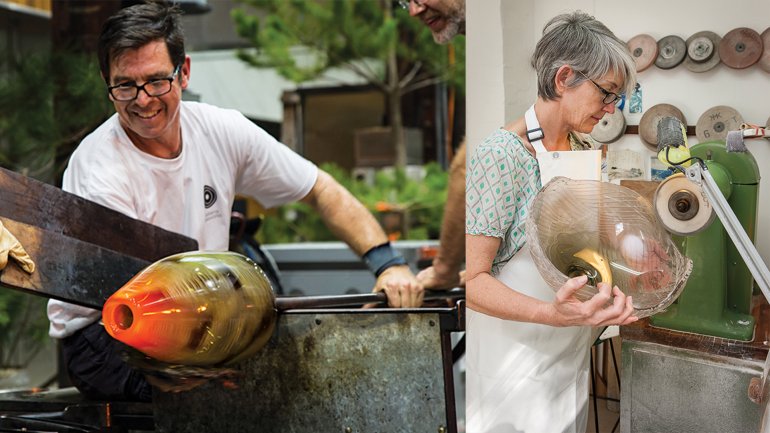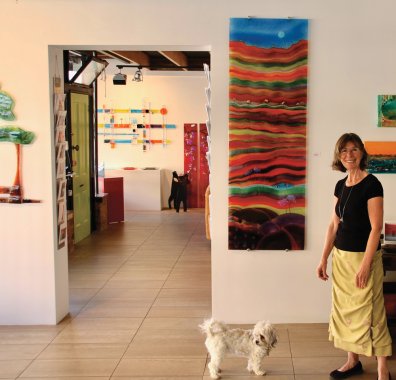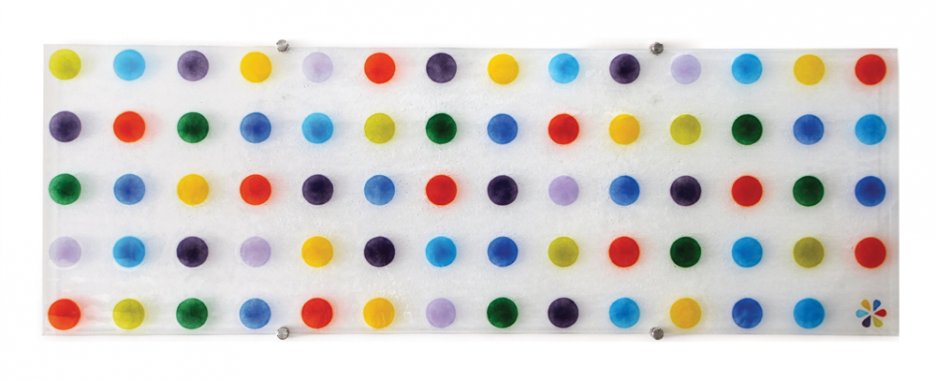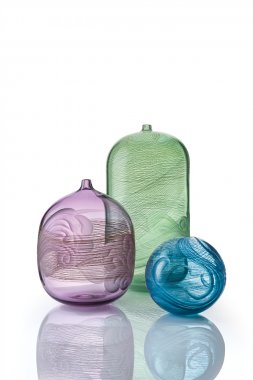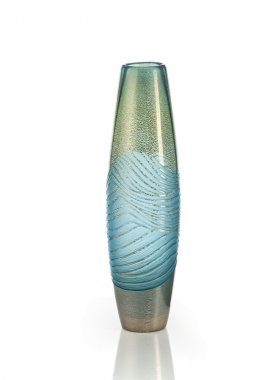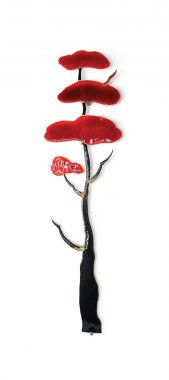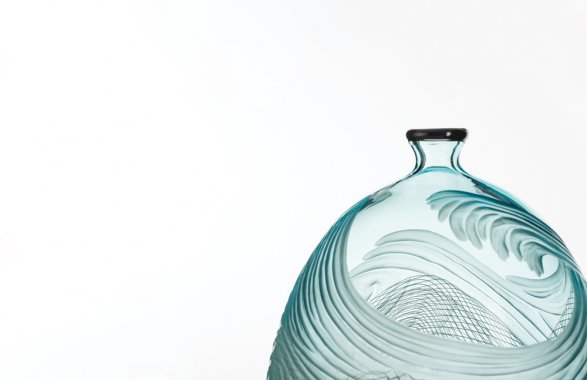Australia: The Land of Oz
Australia: The Land of Oz
A few years ago, Benjamin Edols heard an interview with Australian rock band Silverchair. “The interviewer said to them, ‘You had this really particular garage sound. How intentional was that?’” he recalls. “They said they just made music to the best of their abilities and that’s how it came out. They were kids in a garage, playing with all the skill they had.”
Edols can relate. He and Kathy Elliott, his wife and creative partner, have built a career in glass that began when they were practically kids themselves. Their exquisite vessels and objects, they reckon, are simply the result of the expertise they’ve developed over 25-plus years of work, travel, and life in their green suburb near the surfing beaches just north of Sydney.
“We’re surrounded by bushland on one side and ocean on the other,” Elliott says of the natural environment that informs their work. For a long time they made botanical shapes, leaves and buds in verdant shades. Lately their focus is wave imagery in watery blues, inspired by Elliott’s dreams of turbulent seas. She carves the surfaces of Edols’ blown forms (sometimes he’ll echo her designs with canework swirls), a seamless collaboration he calls “two specialists making one body of work.”
Edols and Elliott met as students at the Canberra School of Art, where they trained under the German-born artist Klaus Moje, leader of the studio glass movement in Australia. “He was affectionately known as ‘Papa Klaus’ because he was a father figure to so many of us, and really influential for a whole generation of glass artists and teachers,” Edols says. “The ripple effect is still there.” Elliott adds, “Klaus had such an international perspective. He encouraged everybody to see themselves in that realm.” Wanderlust tends to be an Aussie trait, in any case, and travel a rite of passage. As Edols explains, “You grow up conscious that the cultural centers of the world are a long way away. You just know at some point you’re getting on a jumbo and making your way overseas.”
In 1992, armed with degrees (Elliott with a BFA, Edols an MFA), the young couple headed to the United States, where they spent two years taking classes and “working for food” at glass schools and studios, from Pilchuck in Seattle and Penland in North Carolina to UrbanGlass in Brooklyn. The adventure built experience, enduring friendships, and an entrée into the American market. They returned to their home city of Sydney in 1994, got married and established their practice, and in 2000 built a large glassblowing studio that they ran for 14 years.
Now, Edols goes to a hot shop in Canberra to blow glass for a few days every month, then brings the forms back to the coldworking studio at their house for Elliott to embellish, although he has also been doing some carving after a six-year hiatus. While sold mostly in Australia, their work is exhibited worldwide (including in a show at Traver Gallery in Seattle in August), so they still manage the occasional trip abroad. With two daughters ages 11 and 15, home is where the heart is, the place where they create with purpose and passion. As Edols says, “Making magic happen – a vessel out of sand, essentially – sparks so much joy.”
"Being Australian means living in an ancient land but a very young country, with little ‘history’ in regard to Western civilization,” says glass artist Elizabeth Mavrick. “The benefit of this mentality is that anything is possible.”
Mavrick finds “spiritual nourishment” on visits to the vast deserts a day’s drive from her home near Perth. “It almost seeps into your cell structure. The red of the dirt is the color of life and mystery, pain and suffering, all-powerful in its beauty,” she says of the dramatic outback panorama that inspires much of her art. “The shimmer of the landscape on a hot day, and the depth and intensity of the colors, are perfectly captured in glass.”
Her large, kiln-fired wall panels portray soulful, stylized terrains that can be viewed vertically or horizontally, conveying earthy depths and endless horizons. Spinifex shrubs and grass trees (both common Australian plant species) dot the hills and plains; winding roads and rivers speak of pathways, wanderings off the beaten track. Other, more abstract compositions suggest the twists and turns of a dream.
Mavrick’s own artistic journey began in 1965 in high school art class, when (true to her name, perhaps) she painted a picture featuring a green sky. Her teacher, she recalls, responded in no uncertain terms: “‘Not acceptable, so you will not study art.’” Mavrick took a first job as a “postage girl,” then worked her way up through various corporate positions in Brisbane and Sydney.
One day in 1979, “a sign caught my eye: ‘Do you want to change your life?’ Well, I thought, why not?” The ad led her to the Sydney College of the Arts, where she had a “wonderful, free, intoxicating” time as a ceramics major, graduating in 1982. Back in her native Western Australia, she made and taught pottery for some years before embracing fused glass. In 1996, she opened her studio, and in 2004 added a gallery in the port city of South Fremantle, where today she creates and exhibits her wall pieces, along with oil paintings and sculptures in glass and metal.
People sometimes refer to Australia as “Oz,” a nickname that evokes Dorothy’s epic voyage and eventual discovery that there’s no place like home. While Mavrick occasionally depicts other regions (Venice, Japan, the Middle East), she sees her relative geographic isolation as a gift, one that has nurtured her imagination, helping her to find her path and audience. “If you stay true to your natural, inherent way of viewing the world – and your belief system toward your work – you will attract the people who get what you do.”


